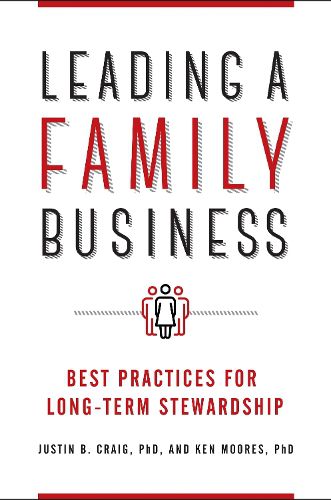Readings Newsletter
Become a Readings Member to make your shopping experience even easier.
Sign in or sign up for free!
You’re not far away from qualifying for FREE standard shipping within Australia
You’ve qualified for FREE standard shipping within Australia
The cart is loading…






Based on insights from executives across the globe, this planning guide captures the unique challenges faced by leaders of a family business and presents an approach to help these operations survive and thrive across generations.
Leading a company is a much different experience for those in a family-run business than for their contemporaries in nonfamilial environments. This book provides a comprehensive overview of the skill set and mindset required to lead family enterprises, and it introduces the four critical areas in which family businesses differ from traditional companies-management structures, governance mechanisms, entrepreneurial advantages, and stewardship practices.
In a fascinating convergence of entrepreneurship, family relations, and corporate principles, the authors present two frameworks to better understand the best practices of leading a family business: a firm-level frame focused on these four critical areas of difference (architecture, governance, entrepreneurship, and stewardship) and an individual one that mirrors these in terms of the skill set and mindset successful leaders need to develop. Craig and Moores consider the differences between leadership in family enterprises and non-family enterprises; the entrepreneurial capabilities needed by executives in family-based firms; and the use of power, identification, and motivation in managing their responsibilities both at home and in the workplace. Case studies provide a real-life look at the inner workings of family operations across the globe.
Includes insights from leaders of family businesses from all over the world
Describes important characteristics for leading family and business systems successfully
Features case vignettes showcasing the complex inner workings of family and business stewardship
Compares the homogeneity evident in non-family enterprises versus the heterogeneity of family enterprises
Discusses the differences between leadership in family enterprises and non-family enterprises
$9.00 standard shipping within Australia
FREE standard shipping within Australia for orders over $100.00
Express & International shipping calculated at checkout
Based on insights from executives across the globe, this planning guide captures the unique challenges faced by leaders of a family business and presents an approach to help these operations survive and thrive across generations.
Leading a company is a much different experience for those in a family-run business than for their contemporaries in nonfamilial environments. This book provides a comprehensive overview of the skill set and mindset required to lead family enterprises, and it introduces the four critical areas in which family businesses differ from traditional companies-management structures, governance mechanisms, entrepreneurial advantages, and stewardship practices.
In a fascinating convergence of entrepreneurship, family relations, and corporate principles, the authors present two frameworks to better understand the best practices of leading a family business: a firm-level frame focused on these four critical areas of difference (architecture, governance, entrepreneurship, and stewardship) and an individual one that mirrors these in terms of the skill set and mindset successful leaders need to develop. Craig and Moores consider the differences between leadership in family enterprises and non-family enterprises; the entrepreneurial capabilities needed by executives in family-based firms; and the use of power, identification, and motivation in managing their responsibilities both at home and in the workplace. Case studies provide a real-life look at the inner workings of family operations across the globe.
Includes insights from leaders of family businesses from all over the world
Describes important characteristics for leading family and business systems successfully
Features case vignettes showcasing the complex inner workings of family and business stewardship
Compares the homogeneity evident in non-family enterprises versus the heterogeneity of family enterprises
Discusses the differences between leadership in family enterprises and non-family enterprises